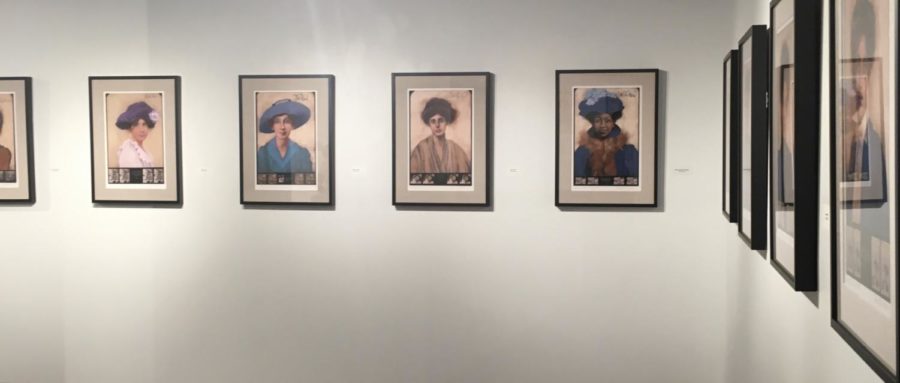The Suffrage Project: An artistic take on equal rights
The Suffrage Project, a nineteen-piece collection of paintings by Mary Kline-Misol, showcases women who fought for equal rights throughout history.
August 26, 2021
The Suffrage Project by Mary Kline-Misol gives audiences a sobering reminder of how many years and how many women it took to achieve the current form of gender equality.
According to the Memorial Union Art Gallery’s Coordinator, Letitia Kenemer, the exhibit represents how many women were required to make such a massive social and civic difference.
“In this time of political and social upheaval, I hope my project will offer to the public a time to pause and reflect on the struggles and hard-won successes of the individuals who all fought to make our country a better place with the goal of real equality in civil rights,” Kline-Misol said in her artist’s statement.
Kline-Misol, who received her graduate degree in painting from Drake University, said her inspiration for the Suffrage Project came from the idea of painting “women of worth” throughout history. But, Kline-Misol said that the project quickly became much more than a group of paintings.
“With each woman I tried to dig deep enough to get a sense of their personal commitments to the cause and this helped me to ‘channel’ them as I painted in the studio,” Kline-Misol said. “I thoroughly immersed myself in each subject and some seemed to come through stronger than others.”
Kline-Misol went on to explain how she connected deeply with Ida B. Wells (1862-1931) when she began her research for the portrait. Kline-Misol said Wells not only fought for women’s equality, but she also ruthlessly fought for racial equality by not giving up her seat on a railroad car, winning a lawsuit about being forcefully removed from the car and exposing the horrific reality of lynching in the south.
“I feel her strength when I look at the portrait,” Kline-Misol said.
In her nearly four years of work on the project, Kline-Misol channeled and portrayed women from the 1700s up to the year 2000, including suffragists such as Sojourner Truth (1797-1883), Susan B. Anthony (1820-1906), Lucy Burns (1879-1966) and Edna Mae Griffin (1909-2000).
According to Kline-Misol, the term “suffragist” has come to represent a quality of character which includes strong commitment and dedication to improving the social status and civil rights of all women. She also states there is a long line of women throughout history that have followed in the footsteps of the suffragist pioneers, but unfortunately, in recent years, the advancements made toward gender equality have been put at risk.
“There is currently a movement which seems to be promoting a reversal of some of the civil rights gains the women’s movement has fought for and obtained in the past,” Kline-Misol said. According to her, these advancements include women having more diverse job opportunities, higher salaries and the public view of women being hardworking and independent members of society.
“We have an uncertain future and hard work ahead,” Kline-Misol said. “The clear understanding of the work of the women of all colors who took up the fight two hundred years ago will give us the courage to finally embrace the words of the Constitution of the United States and the founding principles that all of us are created equal and are to be treated equal under the law in this country.”
The Suffrage Project, which was described as thought-provoking by senior Hayley Golden, will be on exhibit at the Memorial Union Art Gallery until October 10 from 10 a.m. to 4 p.m. on weekdays and 1-4p.m. Sundays.







